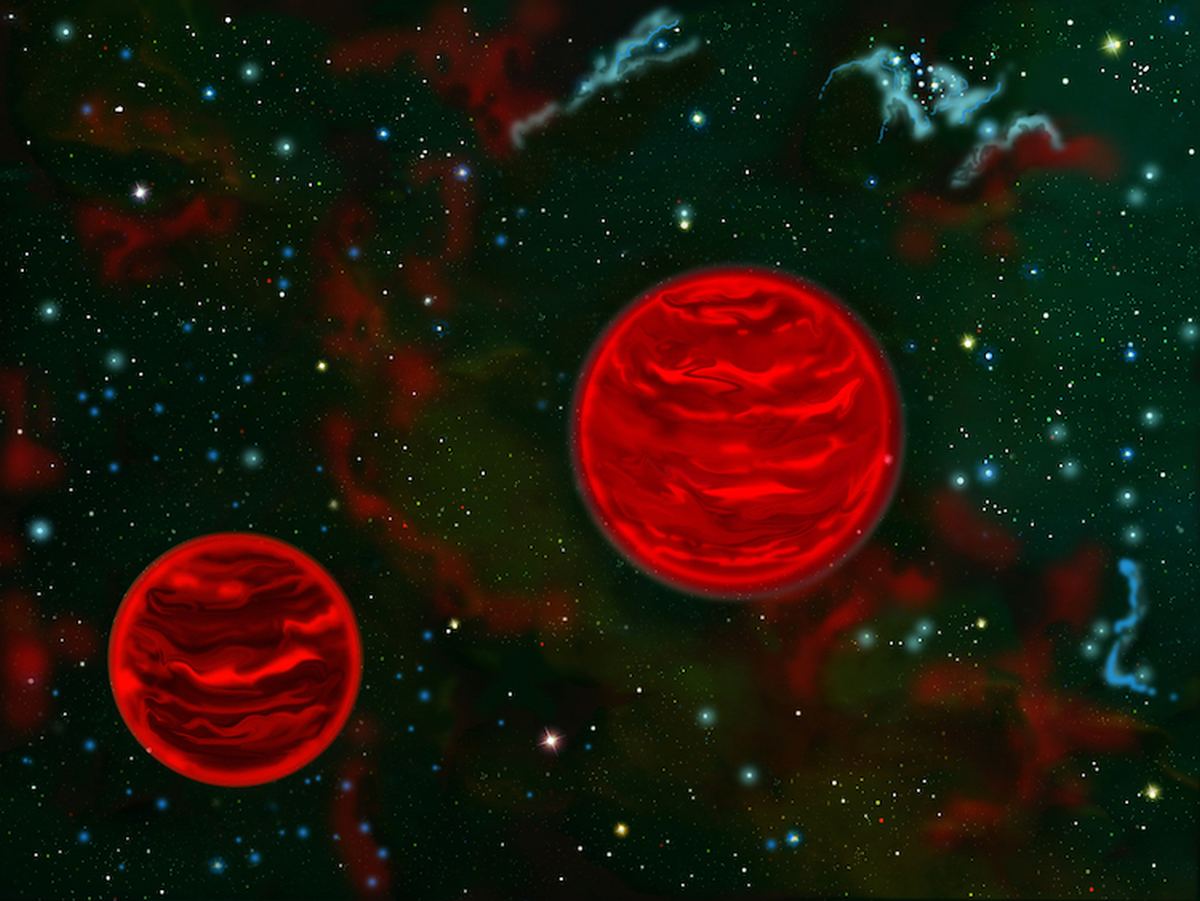When we think of planetary systems, we imagine one or two stars and planets orbiting them. Surprisingly, astronomers from UNAM found a double system of planets that revolve around each other without a star, and also emit energy in radio waves.
This work by Luis Felipe Rodriguez, Laurent Loinard and Luis Zapata from the Institute of Radio Astronomy and Astrophysics (IRyA) of UNAM, Morelia Campus, was recently published in The Astrophysical Journal Letters. In it, the researchers looked for possible radio emission from pairs of giant planets similar to Jupiter, finding this emission in one of these binary systems.
“Wandering planets” had been previously found, that is, objects the size of planets that are alone in space, without orbiting any star or belonging to any planetary system. Just in 2023, an astronomical team discovered 42 binary Jupiter-type planet systems in the direction of the Orion star-forming region, observing infrared light captured by the James Webb Space Telescope.
They called these systems “JuMBOs”, Jupiter-mass binary objects. These systems have two giant Jupiter-like planets orbiting each other, with separations of at least 100 times the distance from Earth to the Sun. “The existence of these widely separated free-floating planetary-mass binaries is unexpected in our current theories. on the formation of stars and planets,” Rodríguez and his collaborators mention in the research article.
It was in the direction of one of these systems, JuMBO 24, in which they found radio emission, using the Karl G. Jansky Very Large Array, a radio observatory composed of several antennas that operate at the same time, located in New Mexico, United States. The astronomers calculated the probability that this emission comes from this direction by chance, finding that it is very low, only 1 in 10,000, so it is very likely that the emission comes from this double system. Furthermore, the emission appears to come from both components of the system.
Other known objects that emit radio waves most similar to JuMBO 24 are ultra-cool dwarfs, small, low-mass stars with a temperature of less than 2,700 K (2,430 °C). However, the emission from JuMBO 24 does not really resemble that of ultra-cold dwarfs, so the nature of this emission remains unknown and more radio observations are required to elucidate it.
JuMBOs are objects about which there is still much to learn, and this first radio detection in them is proof of how exciting their study can be. As if that were not enough, Rodríguez concludes with an intriguing idea: “What is really notable is that these objects could have moons similar to Europa or Enceladus, which have underground oceans of liquid water that could harbor life.”
Luis Felipe Rodríguez’s Career
Luis Felipe Rodríguez obtained his bachelor’s degree in physics from the Science Faculty of the National Autonomous University of Mexico, and his PhD in astronomy from the University of Harvard. He is recognised as the instigator of radioastronomy in Mexico.
His research is focused mainly on the birth and early stages of stars and plants, and he also studies Galactic X-ray sources. Among his contributions, the discovery of bipolar outflows from young stars, the elucidation of the driving mechanism of Herbig-Haro objects, and the detection of protoplanetary disks around young stars, are some of the highlights. This work provides the observational evidence needed to support the idea that young stars are formed surrounded by protoplanetary disks of gas and dust, from which planets will condense, just as must have occurred in our Solar System.
Dr. Rodríguez has received many awards, including the Robert J. Trumpler Prize from the Astronomical Society of the Pacific, the Bruno Rossi Prize from the American Astronomical Society, the Physics Prize from The World Academy of Science (TWAS) and, in Mexico, the Premio a la Investigación Científica given by the Mexican Physics Society, the Premio Nacional de Ciencias y Artes awarded by the government of Mexico, and the Premio Universidad Nacional given by the UNAM. He was also elected Foreign Member of the National Academy of Sciences of the USA.
In 2010 he was made Emeritus Researcher and became Doctor Honoris Causa of the National Autonomous University of Mexico for his distinguished scientific career. Dr. Luis Felipe Rodríguez was elected member of El Colegio Nacional of Mexico in February 2000. He is also an Emeritus Researcher in the Mexican National System of Researchers (SNI).
Research paper
A Radio Counterpart to a Jupiter-mass Binary Object in Orion
Luis F. Rodríguez, Laurent Loinard, and Luis A. Zapata, 2024
The Astrophysical Journal Letters 960, 2
https://iopscience.iop.org/article/10.3847/2041-8213/ad18ac
About IRyA, UNAM
The Instituto de Radioastronomía y Astrofísica (IRyA), or Institute for Radioastronomy and Astrophysics is an academic unit at UNAM, Campus Morelia, Mexico. The Institute’s personnel perform high-level and high-impact research in the areas of interstellar medium, star formation, evolved stars, high energy astrophysics, Galactic dynamics and structure, extragalactic astronomy and cosmology. They also contribute to educate high-level human resources through a postgraduate program, and maintain a close relationship with society through diverse outreach and science communication programs.
If you are interested in our Institute, visit the English version of our webpage, www.irya.unam.mx/web/en
Media contact:
Dr. René A. Ortega Minakata
Outreach and Science Communication
IRyA UNAM Campus Morelia
Text: IRyA UNAM based on the press releases by NRAO and Universe Today:
https://public.nrao.edu/news/astronomers-discover-jupiter-sized-objects/
https://www.universetoday.com/165721/radio-telescope-confirms-free-floating-binary-planets-in-the-orion-nebula/
Illustration: Gemini Observatory/Jon Lomberg





